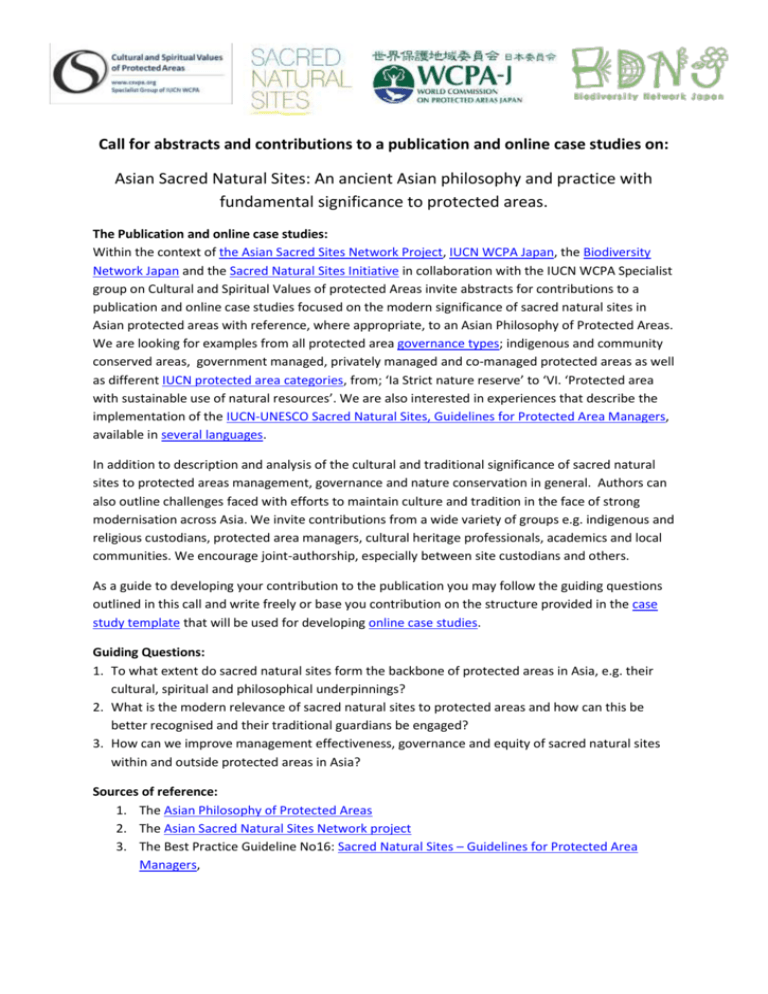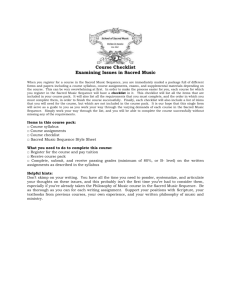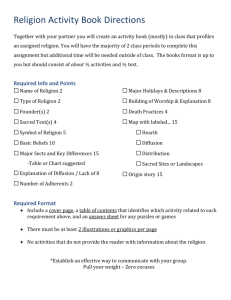this call - Sacred Natural Sites
advertisement

Call for abstracts and contributions to a publication and online case studies on: Asian Sacred Natural Sites: An ancient Asian philosophy and practice with fundamental significance to protected areas. The Publication and online case studies: Within the context of the Asian Sacred Sites Network Project, IUCN WCPA Japan, the Biodiversity Network Japan and the Sacred Natural Sites Initiative in collaboration with the IUCN WCPA Specialist group on Cultural and Spiritual Values of protected Areas invite abstracts for contributions to a publication and online case studies focused on the modern significance of sacred natural sites in Asian protected areas with reference, where appropriate, to an Asian Philosophy of Protected Areas. We are looking for examples from all protected area governance types; indigenous and community conserved areas, government managed, privately managed and co-managed protected areas as well as different IUCN protected area categories, from; ‘Ia Strict nature reserve’ to ‘VI. ‘Protected area with sustainable use of natural resources’. We are also interested in experiences that describe the implementation of the IUCN-UNESCO Sacred Natural Sites, Guidelines for Protected Area Managers, available in several languages. In addition to description and analysis of the cultural and traditional significance of sacred natural sites to protected areas management, governance and nature conservation in general. Authors can also outline challenges faced with efforts to maintain culture and tradition in the face of strong modernisation across Asia. We invite contributions from a wide variety of groups e.g. indigenous and religious custodians, protected area managers, cultural heritage professionals, academics and local communities. We encourage joint-authorship, especially between site custodians and others. As a guide to developing your contribution to the publication you may follow the guiding questions outlined in this call and write freely or base you contribution on the structure provided in the case study template that will be used for developing online case studies. Guiding Questions: 1. To what extent do sacred natural sites form the backbone of protected areas in Asia, e.g. their cultural, spiritual and philosophical underpinnings? 2. What is the modern relevance of sacred natural sites to protected areas and how can this be better recognised and their traditional guardians be engaged? 3. How can we improve management effectiveness, governance and equity of sacred natural sites within and outside protected areas in Asia? Sources of reference: 1. The Asian Philosophy of Protected Areas 2. The Asian Sacred Natural Sites Network project 3. The Best Practice Guideline No16: Sacred Natural Sites – Guidelines for Protected Area Managers, 4. IUCN 2008 Resolution 4.038 Recognition and conservation of sacred natural sites in protected areas 5. The WCC-2012-Rec-147 Sacred natural sites – support for custodian protocols and customary laws in the face of global threats and challenges. Publication schedule: The deadline for submission of abstracts or your outline of ideas for your contribution is the 5th June, 2014 and should not exceed 400 words. The editors will notify the selected contributors that will be included in the publication by the end of June. The final manuscripts of approximately 3000 words (excluding references) will be required by August the 5th and should include up to eight good quality illustrations and photos as well as one or two maps. If the editors receive sufficient significant contributions they will aim to have the publication launch coincide with activities at the World Parks Congress in Sydney Australia. Online case studies schedule: Suggestions for online case studies are always welcome. A case study will be around 1000 words and can be based on your contribution to the publication or stand by itself. We aim to develop each chapter contribution to the publication into an online case study and establish cross-references. For examples of Asian case studies see the Asian Sacred Natural Sites Network Project. Please send your abstracts and bio to info@sacrednaturalsites.org Mongolia’s Bogd Khan protected Area is associated with the life of Ghengis Khan and has been a national protected since 1778. It is now part of the extensive Khan Khentii Mountain Protected Area. It has long been a sacred natural site in use by local Bon shaman but after many years of communist suppression, ancient ceremonies have been revived today, led by local Buddhist lamas. In line with Bon shamanism the ceremonies honour the deities of the mountains and petition against drought and heavy snow. Here the group that performs the ritual at the most sacred part of the mountain, the top, returns led by monks. Third person from the left is Mr. J. Boldbaatar, Director, Khan Khentii Special protected Area and on his right the first modern day park ranger (see case study in the IUCN UNESCO Guidelines). Photo: Robert Wild.








